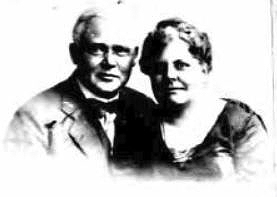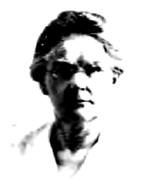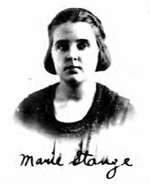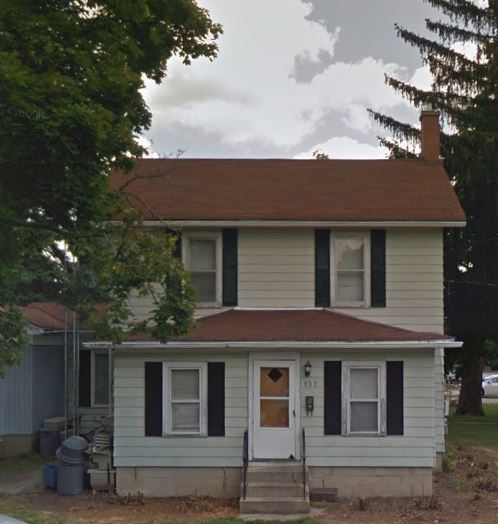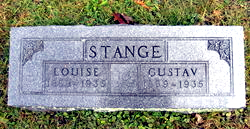
![Main heading: The Music of Gustav Mahler: A Catalogue of Manuscript and Printed Sources [rule] Paul Banks](../../../images/General%20Heading3.jpg)
|
|
||||||||||||||||||||||||||||||||||||||||||||||||||||||||||
|
|
||||||||||||||||||||||||||||||||||||||||||||||||||||||||||
|
|
||||||||||||||||||||||||||||||||||||||||||||||||||||||||||
|
|
||||||||||||||||||||||||||||||||||||||||||||||||||||||||||
|
|
||||||||||||||||||||||||||||||||||||||||||||||||||||||||||
|
|
||||||||||||||||||||||||||||||||||||||||||||||||||||||||||
|
|
||||||||||||||||||||||||||||||||||||||||||||||||||||||||||
|
|
|
|||||||||||||||||||||||||||||||||||||||||||||||||||||||||
|
|
||||||||||||||||||||||||||||||||||||||||||||||||||||||||||
|
|
||||||||||||||||||||||||||||||||||||||||||||||||||||||||||
|
|
|
|||||||||||||||||||||||||||||||||||||||||||||||||||||||||
|
|
||||||||||||||||||||||||||||||||||||||||||||||||||||||||||
|
|
||||||||||||||||||||||||||||||||||||||||||||||||||||||||||
|
|
||||||||||||||||||||||||||||||||||||||||||||||||||||||||||
|
Index of Works |
|
|||||||||||||||||||||||||||||||||||||||||||||||||||||||||
|
Site Map |
|
|||||||||||||||||||||||||||||||||||||||||||||||||||||||||
|
|
||||||||||||||||||||||||||||||||||||||||||||||||||||||||||
|
|
|
|||||||||||||||||||||||||||||||||||||||||||||||||||||||||
|
|
||||||||||||||||||||||||||||||||||||||||||||||||||||||||||
|
|
|
|||||||||||||||||||||||||||||||||||||||||||||||||||||||||
|
|
|
|||||||||||||||||||||||||||||||||||||||||||||||||||||||||
|
||||||||||||||||||||||||||||||||||||||||||||||||||||||||||
During the six years (1891–97) that Mahler worked in Hamburg he was fortunate in being able to call on the services of a fine and diligent copyist, Ferdinand Weidig, who was responsible for many of the surviving handwritten copies of Mahler's music that were prepared during this period, including
|
Lieder und Gesänge |
Piano-vocal scores |
November 1891 |
|
Symphony No. 1 |
Full score, ACF2 |
1893 |
|
Full score, ACF3 |
1894–6 |
|
|
Full score, ACF4 |
1897–8 |
|
|
Symphony No. 2 |
Full score, ACF1 |
1894 |
|
Full score, ACF2 |
1895 |
Weidig was probably also responsible for the unlocated manuscript copy of the full score of the Third Symphony, the parts for the first three symphonies, a piano-vocal score of the Lieder eines fahrenden Gesellen and perhaps scores and parts a number of the Wunderhorn settings. However, Weidig's role was at times expanded as is revealed by a fascinating account of a preliminary orchestral read-through of the first three movements of the Second Symphony in January 1895. Although it was recorded many years after the event, it does offer the first-hand memories of one of the few people present, the composer and critic, J.B. Foerster (JBFDP, 406–7):
|
Zu Beginn der neuen Saison¹ kam es im kleinen Coventgarten-Saal bei geschlossenen Türen zur Uraufführung des Allegros, des langsamen Satzes und des Scherzos. Das Orchester des Stadttheaters verehrte seinen Dirigenten und kam mit Freuden seinem Wunsch nach. Auf der Galerie hatten Gäste Platz genommen, acht im ganzen: die ihre Karriere in Hamburg beginnende Anna Mildenburg,² der Schauspieler [Karl] Wagner, Rechtsanwalt Doktor [Hermann] Behn und Fabrikant Wilhelm Berkan mit ihren Gemahlinnen, endlich meine Frau³ und ich. |
At the beginning of the new season³ the first performance of the Allegro, slow movement and Scherzo took place in the small Covent Garden hall, behind closed doors. The orchestra of the Stadttheater respected its conductor and happily acceded to his wish. Guests, eight in all, had taken their seats in the circle: Anna von Mildenburg, just starting her career in Hamburg,² the actor [Karl] Wagner, the lawyer Dr [Hermann] Behn and the manufacturer Wilhelm Berkan with their wives, and finally my wife³ and myself. |
|
Mahler erschien mit dem Orchestermitglied Weidich [recte: Weidig], einem älteren Herrn, der die Aufgabe hatte, die von Mahler während der Probe bezeichneten Abänderungen und Ergänzungen vorzumerken. Unser Zuhörerkreis vernahm zuerst nur kurze Bruchstücke der Musik, denn Mahler unterbracht das Spiel immer wieder durch seine Bemerkungen: „Weidlich, das Violoncello unisono mit dem Fagott – die Oboen streichen – Flöten verdoppeln – die Harmonie in die Posaunen.” |
Mahler appeared with a member of the orchestra, Weidich [recte: Weidig], an old man whose task it was to record the revisions and additions specified by Mahler during the rehearsal. At first our group of listeners heard only short fragments of music, as Mahler constantly interrupted the playing with his comments: "Weidlich, the cello in unison with the bassoon – delete the oboes – double the flutes – the harmony in the trombones." |
|
Weidichs Vormerkbuch war bald vollgeschrieben. Manche Abänderungen und die dynamische Details wurden gleich an Ort und Stelle in die Partiturstimmen eingetragen, das Übrige wurde in der Pause berichtigt. Nach dieser Vorbereitung spielte das Orchester Satz um Satz ohne Unterbrechung durch und belohnte zum Schluß den Komponisten mit herzlichem Applaus. Wir Zuhörer waren hingerissen. |
Weidich's notebook was soon full. Many alterations and details of dynamics were entered into the parts there and then, and the rest were corrected during the interval. After this preparation the orchestra played through movement by movement without interruption and at the end awarded the composer enthusiastic applause. Those of us in the audience were overpowered. |
It is interesting that Foerster remembered Weidig as an 'old man': he was, in fact, 54 years old at the time. Just how closely Mahler worked with his copyist is also recorded by Natalie Bauer-Lechner, in her account of Mahler's daily life in the autumn of 1896 (NBL2, 74; NBLE, 74 (revised)):
|
Nach Tisch – nach einen kurzen, meist noch durch musikalische Besuche: von Opernkomponisten, Textschreibern, Sängern usw. gestörten Schläfchen – war Mahler's beinahe täglich Gang zum Kopisten Weidik. An diese Weidik-Gänge, bei denen ich ihn gewöhnlich begleitet, schlossen sich unsere eigenen Spaziergänge.... |
After lunch, Mahler's short nap is usually interrupted by the visits of other musicians – opera composers, librettists, singers and so on – Mahler went almost daily to see the copyist Weidik [sic]. I usually accompanied him on the Weidik-trips, after which we would continue our walks.... |
That Mahler's copyist has been correctly identified and the outlines of his life and career documented is due principally to the research of Peter Revers (PRFW) and Klaus Döge (KDFW),⁴ and their work forms the basis of the narrative that follows, supplemented with some additional details.⁵
Carl (or Karl) Traugott Ferdinand Weidig was born at Hohnstein in Saxony on 29 May 1841. His father was a local linen weaver, Karl Traugott Weidig (17 December 1803–11 March 1859) and his mother was his father's second wife, Johanne Christiane, née Gräubig, whom he married in 1839.⁶ Ferdinand seems to have been brought up and educated in the Hohnstein area, and it was not until 1862 that he moved to Elberfeld, and was registered as a musician.⁷ It was there that he married his first wife, Juliane Hulda Albrecht (died before 1873) in 1865, but by the end of 1866 the couple had moved to Hamburg. The reason for this move has not been uncovered, but by 1884 Ferdinand was a well-established trombonist in the orchestra of the Stadttheater and it was in that city that all his children were born.
The first, (Heinrich August) Adolf (28 November 1867–29 September 1931) was musically gifted and studied at the Hamburg Conservatoire with, amongst others, Bargheer and Reimann; in 1888–91 he received a Mozart Stipendium for further studies with Abel and Rheinberger in Münich. Following his emigration in May 1892 Adolf had a successful career in Chicago, as a performer – he was a violinist in the Symphony Orchestra (1892–6) and violist in the Spiering Quartet (1892–1901) – and as co-director and Dean of the Department of Theory at the American Conservatory of Music.⁸ He was also a prolific, if conservative, composer whose output included two symphonies. In 1916 he contributed a short account of his father's work for Mahler to GMCCM, first cited by Peter Revers:
|
Mahler was engaged at the Hamburg Opera from 1891 to 1898 [sic]. During these years I first became acquainted with the man and musician. My father, a member of the Opera Orchestra, had gained fame as a most reliable and musicianly copyist; in fact, he had done work for Rubinstein, D' Albert, von Bulow, etc., and Mahler immediately availed himself of my father's services. In 1891 he was writing his First Symphony in D Major, and in the course of getting the material ready for performance and subsequently for the publisher, he became a frequent visitor at our home. I, who was then a student, learned to know his score, and my youthful enthusiasm soon turned to admiration for Mahler's great creative genius, and this admiration grew apace with every work of his fertile mind. His manuscript was by no means very legible, and his words of appreciation, when my father pointed out inaccuracies, gave proof of an unaffected, almost childlike, nature. His capacity for concentrated work knew no limit. During those seven years in Hamburg he wrote three Symphonies, "Das klagende Lied" for Soli, Chorus and Orchestra and a number of songs to poems from the famous collection known as "Des Knaben Wunderhorn," and the copies of all these scores were made in our home. |
|
When one considers the amount of labor his position at the Opera exacted of him, in addition to his creative work, one naturally wonders at his strong vitality. Yet his nervous system was most sensitively organized and he suffered keenly, although mostly silently, when his artistic ideals were misunderstood, which happened only too frequently. |
|
New York is only one of the many places in
the musical world which owes him a debt of gratitude, and I
am sure the performance of the Eighth Symphony under Leopold
Stokowski will be a most sincere homage to Mahler's great
genius. |
This memoir is of some interest: it suggests that Mahler's habit of regularly visiting Weidig, noted by Bauer-Lechner in 1896, was established soon after Mahler's arrival in Hamburg,⁹ and Weidig certainly copied the Lieder und Gesänge in October-November 1891, and may also have prepared copies of some of the new Wunderhorn settings that Mahler composed early in 1892. However, it raises chronological issues because no evidence has yet come to light that Adolf returned to Europe before a trip in 1908/9. If that was the case, then he can only have known about his father's work on the Second and Third Symphonies, Das klagende Lied and the other songs at second hand, which is not inconsistent with his account. However, if his claim that he came to know the First Symphony while his father was copying it is correct, on chronological grounds it cannot refer to the copying of ACF2, which was prepared from AF2 after that score was revised in January 1893. It is also difficult to link it with the mysterious manuscript the Mahler gave to Jenny Perrin in March 1891 (see the notes to AF2), but, on the other hand it is not impossible that in late 1891 Mahler decided (incorrectly as it turned out) that an extra copy might be useful in view of his recent contact with Dr Strecker of Schott's Söhne.
Ferdinand and Juliane's second child, (Johanna Juliana Anna) Louise (8 June 1869–28 March 1935) married a trombonist, (Arthur) Gustav (Max) Stange (4 October 1869–28 March 1935) – perhaps a pupil of her father, and certainly, from 1898/9 a fellow member of the orchestra of the Hamburg Stadttheater – on 29 August 1900. In 1902 they and their two children emigrated to the USA, where Gustav took up an appointment with the Chicago Symphony Orchestra – probably facilitated by his brother-in-law's connection with the orchestra – which he held until he retired in 1929. Their first child, Marie (Helene) (b. 20 February 1901) also seems to have planned a musical career, and studied in Germany and Austria during a five-month trip made with her mother in 1922; she visited Europe again in 1924, and gave her profession as 'musician' on her passport application. As yet, no information about her subsequent life and career has been traced, and details of her brother, Robert (b. 1902) are similarly lacking.
At some time after the birth of her third child, Gustine Friederike Marie (4 June 1870–24 July 1940), Juliana Weidig died, and on 3 December 1873 Ferdinand married Friederike Louise Sophie Dorothea Ida Rechtenbach (4 July 1845–1 July 1892). Her father was Christian Tobias Rechtenbach (1800–1865), who had been a clarinettist and viola-player in the Meiningen Orchestra from 1826, and was appointed a Kammermusicus in 1846. Friedericke's first child was a daughter, Johanna Emilie (10 July 1876–10 July 1894), who died at the age of 17; and her second, a son, Heinrich Robert (15 September 1882–11 May 1970).¹⁰
Ferdinand was 51 when he was widowed for the second time. He had relatively secure employment at the Stadttheater, and was also able to work as a copyist – not least for Mahler – but changes in his personal life gradually followed. His second daughter, Gustine married in 1895¹¹ and in 1899, having been a member since 1884, Weidig left the Hamburg Staatsverband for unknown reasons. But the decisive event was the marriage in 1900 of Louise, to his colleague Gustav Stange: within a year of their departure for Chicago, Ferdinand was planning to move. On 22 June 1903 he informed the Hamburg authorities that he was intended to relocate to Jena (KDFW, 17) but on 22 August he boarded the S.S. Pretoria, bound for New York via Boulogne and Plymouth.
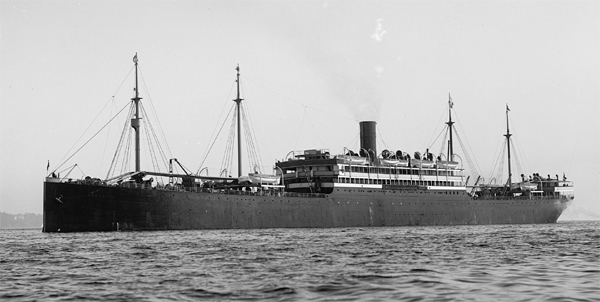
Fig. 4
S.S. Pretoria of the Hamburg-Amerikanische
Packetfahrt-Actien-Gesellschaft, c. 1898
Interestingly, the entry for Ferdinand in the passenger list for this voyage specifically indicates that he was not intending to emigrate: presumably the journey was planned as a trip to visit three of his children living in Chicago, but in the event, he stayed for the rest of his life. The 1910 and 1920 census listings show him residing with the Stange family at 1446 Hood Avenue, which Gustav Stange owned: if it was the property shown below – situated in a leafy suburb north of Chicago – it was built in 1904, so it is possible that Stange had bought it when new:¹²

Fig. 5
The Stange family home?
Gustav was the sole bread-winner in the household, but the only other significant information to emerge from the censuses is that while the Stanges had been naturalised in 1909, Ferdinand continued to reside in the US as an alien. When he died on 16 March 1921, the death record described him as a 'retired musician' and noted that he was buried at Graceland Cemetery, Chicago: ten years later, his first son, Adolf, was also interred there. By the time of the 1930 census Gustav (who had retired) and Louise Stange had sold up and bought a house at 803 N. Taylor Street, Marengo, about 60 miles west of Hood Avenue:
Fig. 6
803 N. Taylor Street, Marengo in 2015
On 28 March 1935 they were both killed in a road accident at Bolivar, Tennessee¹³ and their ashes buried together at Marengo City Cemetery. They were probably on their way to or from a visit to Louise's half-brother, Heinrich Robert Weidig who had been living in Memphis, Tennessee for many years: it was he who reported their deaths to the Tennessee authorities.
So, between 1892 and 1907 Ferdinand Weidig and all his surviving children joined the final stages of the mass emigration of Germans to north America: between 1820 and 1880 perhaps nearly six million had already moved the the USA and made their homes there. One can only wonder whether Ferdinand, Adolf, Louise or Gustine attended one of the two performances in March 1907 by the Chicago Symphony Orchestra, under Frederick Stock, of the relatively new Fifth Symphony by Gustav Mahler, who in the 1890s had visited their home in Hamburg so frequently.

![]() https://orcid.org/0000-0002-2258-0267
©
2007-21 Paul Banks | This page was lasted edited on
07 January 2021
https://orcid.org/0000-0002-2258-0267
©
2007-21 Paul Banks | This page was lasted edited on
07 January 2021
